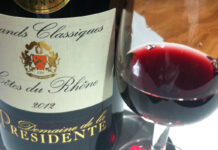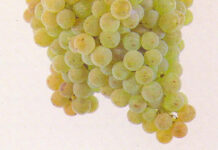Luke Richardson is the sommelier at wine bar Le Di-Vin in Edinburgh. In his column for SLTN he shares his thoughts on all things wine-related and answers your questions about wine. If you have a question for Luke email it to sltn@peeblesmedia.com
 Following my introductory column last month, I thought I would start by talking a little about grape varieties in general, with an emphasis on how to build them into a wine list.
Following my introductory column last month, I thought I would start by talking a little about grape varieties in general, with an emphasis on how to build them into a wine list.
Roughly speaking, both red and white varietals can be split into three categories: light-bodied, medium-bodied and, you guessed it, full-bodied. No matter what size of list you plan to run, there should ideally be a representation of each – but in varying proportions if you plan on running multiples of each type.
As is often the way in the wine world, whites and reds match each other inversely – ie. light-bodied whites are the most popular, followed by medium-bodied, and then full-bodied are the least popular; but the opposite is true for reds. Most grape varieties are capable of producing at least a couple of these styles and some are capable of all three, so it is worth knowing which varietals fit in the style profile and at the right price.
Before going into specific grape varieties, it’s worth also noting how we go through the process of tasting – what actually happens when the wine is in the mouth.
Without getting too scientific, there are several elements that are important.
Firstly, smell is hugely important. In fact, it accounts for around 80% of our sense of taste as the memory is triggered into recognising flavours by the olfactory bulb, located behind the eye sockets on the front of the brain. The mouth itself only senses taste sensations – acidity, sweetness, bitterness, saltiness and savouriness – and all other flavour information is recalled by the brain.
People often (wrongly) say that some white wines, for example, are sweet when in fact they may be very fruity but have lots of acidity following the fruit sensation – Marlborough Sauvignon Blanc, for example.
When describing white wines, the idea of them being dry, off-dry or sweet is really a description of how the mouth is left AFTER swallowing a sip. If there is a sensation of sugar after the acidity has refreshed the palate, then the wine is not dry; if that sensation of sugar is very light, we would suggest that it is off-dry; and if there is an abundance of sugary flavours left then we would describe the wine as sweet.
For red wines, there is a structural element called tannin that gives the impression of dryness – it is a very astringent compound that mainly comes from the grape skins and pips. This is also tasted in balance with sweetness (or fruitiness) but there is also some acidity involved as well. Most red wines are in fact dry, but often customers will talk about liking sweeter reds. They normally mean very ripe fruited reds, like Zinfandel, some Malbecs, Negroamaro and the like.
Right, that’s me out of space for this one, so I’ll start talking next month about specific grape varieties and how best to select them.
In the meantime, happy drinking!



















